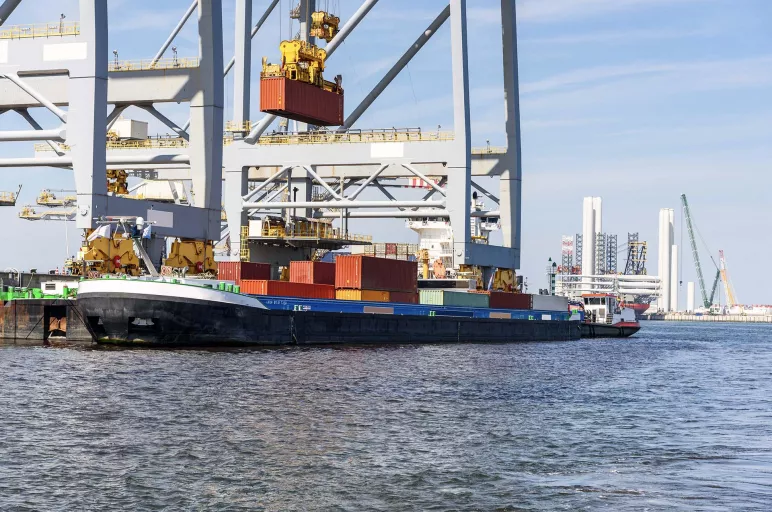
How to Build a Zero-Distance Supply Chain
- Legacy supply chains lack end-to-end visibility, leading to disruptions.
- The zero-distance model uses IoT sensors, advanced analytics, and integrated systems to provide transparency.
- This enables data-driven, agile decision making across functions to boost efficiency, resilience and customer service.
February 01, 2024 | Supply Chain Software
In today's global and hyper-connected economy, consumers expect personalized, customized products delivered to their doors overnight at the lowest possible prices. These pressures strain already complex global supply chains spanning multiple countries, suppliers, manufacturers, distributors and logistics providers.
Lack of end-to-end visibility leaves supply chains vulnerable to unexpected disruptions that jeopardize customer service, increase costs and erode profit margins. To thrive in such an environment requires transforming traditional linear supply chains into intelligent, transparent networks, into what we call the zero-distance supply chain.
Closing the Supply Chain Visibility Gap
Legacy supply chains often resemble long, disjointed chains where each link operates in isolation with limited visibility beyond their immediate partners.
This fragmented view makes it almost impossible to see potential issues before they wreak havoc. And once disruptions occur, the lack of insights across the broader network delays response times.
The zero-distance supply chain breaks down these silos by using Internet of Things (IoT) devices to collect real-time data across every node and provide end-to-end transparency. Tiny IoT sensors placed on products, vehicles, equipment and infrastructure continuously transmit information on location, condition, temperature and more.
With billions of data points streaming in from all corners of the supply chain, supply chain managers gain complete visibility at a glance.
An AI-powered command center processes and analyzes the flood of data to spot emerging risks, like delayed raw material deliveries or product quality problems at a factory. Armed with insights, supply chain managers can get ahead of issues before they bloom into major disruptions.
Making Data-Driven Decisions
End-to-end visibility provides the foundation for intelligent, data-driven decision making. Sophisticated analytics tools process the mountains of IoT sensor data and surface key patterns and insights in easy-to-digest formats. Data visualization transforms statistics into intuitive graphs and charts tailored to different roles.
Front-line supervisors can quickly spot production backlogs or scheduled maintenance needs. Strategic leaders have the metrics they need for long-term capacity planning and infrastructure investments. When disruptions inevitably occur, data simulations help evaluate the impact of various response scenarios on costs, sustainability and customer service tradeoffs to select the optimal path forward.
Breaking Down Functional Silos
Lack of alignment and information sharing between functions like procurement, manufacturing, logistics, sales and marketing leads to ineffective planning and reactive firefighting. The zero-distance supply chain breaks down these silos through digital twins and control towers.
A digital twin is a virtual representation of the entire physical supply network. This living model integrates data flows across the end-to-end value chain. Teams can run simulations to optimize plans and design changes prior to costly real-world implementations. Digital twins enable true alignment.
Control towers are intelligence hubs that give decision-makers real-time visibility into what is happening at any point in the supply chain. These centralized data integration platforms bring together metrics from partners, orders, inventory, shipments, equipment and more. Control towers help teams stay in sync and make coordinated decisions as conditions change.
Gaining Competitive Advantage
The zero-distance supply chain powered by IoT, advanced analytics and integrated systems allow companies to achieve new levels of agility, efficiency and customer centricity. Leaders can dynamically sense and respond to changing customer demands and market conditions in real-time. Intelligent automation handles routine activities so human talent focuses on innovation and continuous improvement.
Supply chain excellence will be a key competitive differentiator as the pace of business accelerates. Companies that transform their linear, fragmented supply chains into integrated, transparent, data-driven networks will gain significant advantage, making zero-distance supply chain the roadmap for success in 2024.



